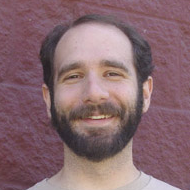I’ve already blogged about (and the joint TFN/NCSE press release detailed) how ideologically-driven textbook reviewers tried to undermine Texas textbooks’ coverage of evolution and climate change. But it turns out, there’s another front of the culture wars being waged over Texas textbooks: abortion.
A reviewer looking at the Pearson Biology textbook—Ken Miller and Joe Levine’s best-selling biology textbook—objected to two statements:
The text states that pregnancy begins when the developing fetus attaches to the wall of the uterus (implantation). This is factually incorrect. Dorland's Medical Dictionary defines pregnancy as "the condition of having a developing embryo or fetus in the body, after union of an ovum and spermatozoon." Thus, pregnancy begins at fertilization.
and
The text states that by the end of three months of development the fetus may begin to move. This is incorrect. Several sources have documented fetal movement as early as eight weeks, sooner in some cases.
He added his opinion that it is a “[n]ice book but the brief section on human fetal development is lacking. We should be teaching students more about this subject. Most students will one day be parents and they need more information about this biological process. I believe knowledge of human fetal development should be one of the TEKS.”
Each of the changes he suggested plays into a standard argument of anti-abortion activists. He had no comment on any other topic.
This might all seem innocuous enough, if you don't know that the radical religious right often picks a fight over when pregnancy begins. They define pregnancy to begin at the moment of fertilization, rather than at implantation, and thus they claim that birth control pills (including Plan B) cause abortion by preventing implantation of the fertilized egg. Standard medical dictionaries, textbooks, and federal law, all define pregnancy as starting at implantation. Since as many as three out of every four fertilized eggs naturally fail to implant, that’s a pretty reasonable stance. (BTW, more on this point, and a case of a certain prominent creationist making the same point as this reviewer, in a little bit.)
As for fetal movement, the book simply states:
After eight weeks, the embryo is called a fetus. By the end of three months of development, most of the major organs and tissues of the fetus are fully formed. The fetus may begin to move and show signs of reflexes.
To say that the book is factually wrong is a stretch at best. The question of when fetal movement starts is tricky, since obstetricians and embryologists distinguish purposeful movements—those driven by brain activity—from reflexive movements driven by events in the spinal cord. Purposive movements don’t start until about three months, which is also when the pregnant woman can first feel the kicks. The first reflexive flutters of movement start as early as eight weeks, as the reviewer observes.
From the perspective the reviewer raises, that of a student who may one day be pregnant (or have a pregnant partner), the time when fetal movement is first felt is far more relevant than the time when fetal muscles are first able to flex. Antiabortion activists, however, like to emphasize those earliest movements as a way to advance a philosophical and religious argument about when we should consider a fetus to be an independent human life.
That broad sociocultural debate may have a place in a social studies class, but not in a biology textbook. Reviewers whose only agenda is to find ways to work in their pet issues should not be allowed to rewrite the textbooks and science education standards, let alone introduce falsehoods.

